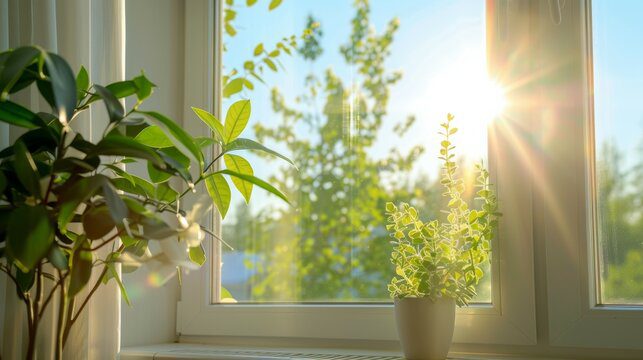Air pollution is not limited to the outdoors; indoor air can often be more polluted due to dust, chemicals, and poor ventilation. Natural air purification methods can help improve the air quality in your home, creating a healthier environment for you and your family. Here’s a comprehensive guide to naturally purifying the air in your home.
1. Use Indoor Plants
Indoor plants are nature’s air purifiers. They not only add aesthetic appeal but also help in absorbing toxins and releasing oxygen. Some of the best air-purifying plants include:
- Spider Plant: Removes carbon monoxide and formaldehyde.
- Peace Lily: Reduces mold spores and absorbs toxins.
- Areca Palm: Known for its humidifying and air-purifying qualities.
- Snake Plant (Mother-in-Law’s Tongue): Converts CO2 to oxygen even at night.
- Aloe Vera: Absorbs airborne toxins like benzene and formaldehyde.
Place these plants in areas like the living room, kitchen, and bedroom for maximum benefit.
2. Increase Ventilation
Proper ventilation is essential for maintaining clean air indoors. Here’s how to ensure better airflow:
- Open windows and doors for a few hours daily to allow fresh air circulation.
- Use exhaust fans in the kitchen and bathroom to remove pollutants.
- Avoid over-sealing your home, as this can trap pollutants inside.
3. Use Natural Air Fresheners
Avoid chemical-based air fresheners that may emit harmful volatile organic compounds (VOCs). Instead, try these natural alternatives:
- Essential Oils: Diffuse oils like lavender, eucalyptus, or lemon for a pleasant aroma and antibacterial properties.
- Simmering Potpourri: Simmer a mix of citrus peels, cloves, and cinnamon sticks on your stove.
- Activated Charcoal: Place small bowls of activated charcoal in rooms to absorb odors and toxins.
4. Himalayan Salt Lamps
Himalayan salt lamps are believed to release negative ions that can help neutralize pollutants in the air. While their scientific benefits are debated, many people find them effective in improving air freshness.
5. Beeswax Candles
Burning beeswax candles is a natural way to purify the air. They produce negative ions that attract and neutralize airborne pollutants like dust, pollen, and mold.
6. Maintain Humidity Levels
Excess humidity can promote mold and dust mites, which are harmful to indoor air quality. Maintain a humidity level between 30-50% by:
- Using a dehumidifier in damp areas.
- Keeping houseplants in check as overwatering can increase humidity.
- Ventilating bathrooms and kitchens properly.
7. Natural Cleaning Solutions
Cleaning products often release harmful chemicals into the air. Switch to natural cleaning agents such as:
- Vinegar and Baking Soda: Effective for cleaning surfaces and eliminating odors.
- Lemon Juice: A natural disinfectant and odor remover.
- Castile Soap: An eco-friendly and chemical-free cleaning solution.
8. Keep Dust and Allergens in Check
Dust and allergens significantly affect air quality. Reduce their presence by:
- Vacuuming regularly with a HEPA-filter vacuum cleaner.
- Washing bedding weekly in hot water.
- Using doormats to prevent outdoor dirt from entering your home.
- Dusting surfaces with a damp cloth instead of a dry one to trap particles.
9. Incorporate Natural Air Purifiers
Some simple household items can act as air purifiers:
- Bamboo Charcoal Bags: Absorb pollutants and odors effectively.
- Baking Soda: A natural odor eliminator; place it in open containers around the house.
10. Avoid Synthetic Materials
Synthetic furniture, carpets, and paints can emit harmful chemicals. Opt for:
- Eco-friendly paints with low or no VOCs.
- Natural fiber carpets made from wool or jute.
- Solid wood furniture instead of particleboard or plywood.
Conclusion
Purifying the air naturally is not only eco-friendly but also enhances your health and well-being. By incorporating plants, improving ventilation, using natural cleaners, and maintaining proper humidity, you can create a cleaner and fresher indoor environment. These simple yet effective measures ensure that your home remains a sanctuary of clean air.
Do you have additional tips or methods for naturally purifying air at home? Share them in the comments below!
Chirag Singh is a content writer with a focus on real estate, covering topics like News, Guidance, Tips, Property trends and Investments. He has written for various platforms, providing helpful insights to readers. With a background in real estate, Chirag combines his knowledge and passion for real estate in his work. He enjoys staying updated on the latest industry trends.

